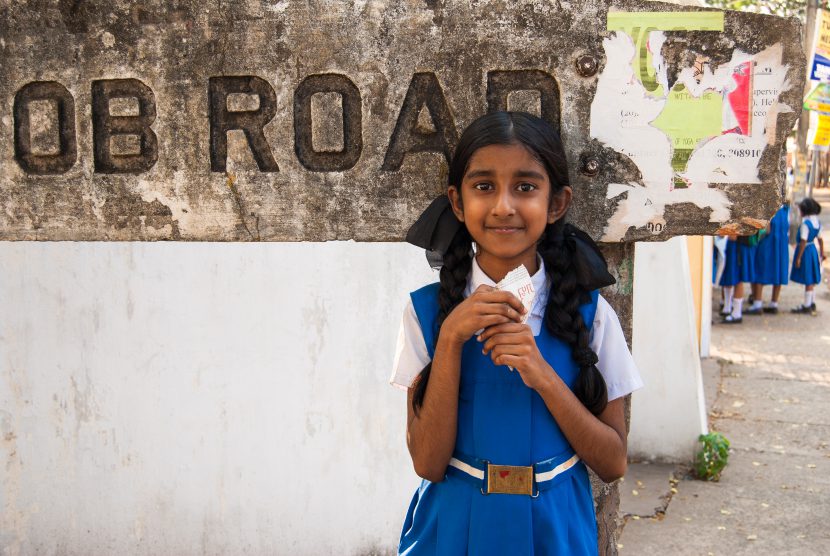In many Asian countries, deeply rooted traditions and a cultural preference for male children, but also discriminatory family and property laws have led to harmful practices which ensure the birth of a male child. These practices include sex selective abortions but also the post-natal killing or neglect of girl babies. Today, because of the deliberate elimination of girls, more than 160 million women are missing on the Asian continent. In India, where the gender ratio is particularly imbalanced, the distorted masculinization of the society accentuates a climate of violence and discrimination against women and girls.
“Bringing up a daughter is like watering a plant in another’s courtyard”
The United Nations recently declared India to be the world’s most dangerous place for girls: Until the age of five, according to a new UN study, their mortality rate is 75 percent higher than that of boys. In addition, for 100 newborn girls, about 112 boys are born, whereas nature usually dictates a ratio of 105 boys to 100 girls.
These alarming trends in the sex ratio and the survival rates demonstrate a long established son preference in the Indian society. Sons are meant to continue the family name, earn money, support their parents in old age, conduct funeral rites, whereas girls have a marginal social and economic position and will marry into another family, taking her dowry with them and therefore causing them to be a financial burden to their family. According to a saying in India, “bringing up a daughter is like watering a plant in another’s courtyard”.
The annihilation of baby girls has additionally been exacerbated with a modern desire for smaller families and new technologies that identify the sex of a fetus. The development of prenatal diagnosis technology has made it even easier to select the sex of the unborn child through the systematic abortion of female fetuses, whilst the desire for smaller families combined with the traditional son preference has steadily increased the demand for prenatal sex selection.
The consequences of son preference and sex selection
Next, to an increasing number of sex-selective abortions and the deliberate killing of girl babies after their birth, girls are especially subject to discriminatory attitudes with regards to postnatal care, breastfeeding, food allocation, proper clothing, parental surveillance, health care, education and immunization.
Women are often facing immense pressure from their family and the society to give birth to sons instead of daughters. Some women experience violence and abandonment when giving birth to a daughter or when refusing to engage in practices of sex selection. Furthermore, the fear to see their daughter suffer and being neglected by the family additionally compels women to engage in practices of sex selection or infanticide.
The gender imbalance in the Indian society is not only reinforcing discrimination and patriarchal dynamics in the society, but is also increasing the risk of forced marriages, rape, or the abduction and the trafficking of girls and women for the purpose of marriage or sexual exploitation.
Ending son preference and sex-selection by empowering girls and women in the Indian society
India’s legislation already punishes all forms of female infanticide and prenatal sex selection. The Pre-conception and Pre-natal Diagnostic Techniques Act, for example, prohibits any use or advertising of prenatal diagnostics for the purpose of sex selection. However, these laws are often difficult to enforce in practice. It is therefore vital to address the root-causes of son preference and sex selection and to empower girls and women in the Indian society.
Better access to education and reproductive health services as well as awareness raising of girls and women’s value and contributions to the family and society is essential to changing behaviours. A strong political commitment on the national and community level, a collaboration with religious organizations, media and the judicial sectors also play a key role.

Our projects in Tamil Nadu and Madhya Pradesh in India especially address the promotion of women’s empowerment, education, better professional training for women as well as maternal health.
DONATE NOW to change children’s lives and provide them with a brighter future!
Learn more about Humanium: www.humanium.org/en
Written by: Anja Finke
References
UN Women (2012) Son preference / female infanticide / sex-selective abortions. Retrieved from: http://www.endvawnow.org/en/articles/606-son-preference-female-infanticide-sex-selective-abortions.html
An interagency statement
OHCHR, UNFPA, UNICEF, UN Women and WHO (2011) Preventing gender-biased sex selection. Retrieved from https://www.unfpa.org/sites/default/files/resource-pdf/Preventing_gender-biased_sex_selection.pdf
The Economist (2010) The war on baby girls – Gendercide.
Retrieved from https://www.economist.com/node/15606229
Save the Children (2017) Is dowry system in India still the reason for female infanticide?
Retrieved from: https://www.savethechildren.in/resource-centre/articles/is-dowry-system-in-india-still-the-reason-for-fema
BBC (2011) Where are India’s millions of missing girls? Retrieved from http://www.bbc.com/news/world-south-asia-13264301
DW (2011) Female infanticide in India mocks claims of progress. Retrieved from http://www.dw.com/en/female-infanticide-in-india-mocks-claims-of-progress/a-15900828
Süddeutsche Zeitung (2010) Massenabtreibungen weiblicher Föten. Retrieved from http://www.sueddeutsche.de/panorama/unerwuenschte-toechter-in-indien-massenabtreibungen-weiblicher-foeten-1.66718


